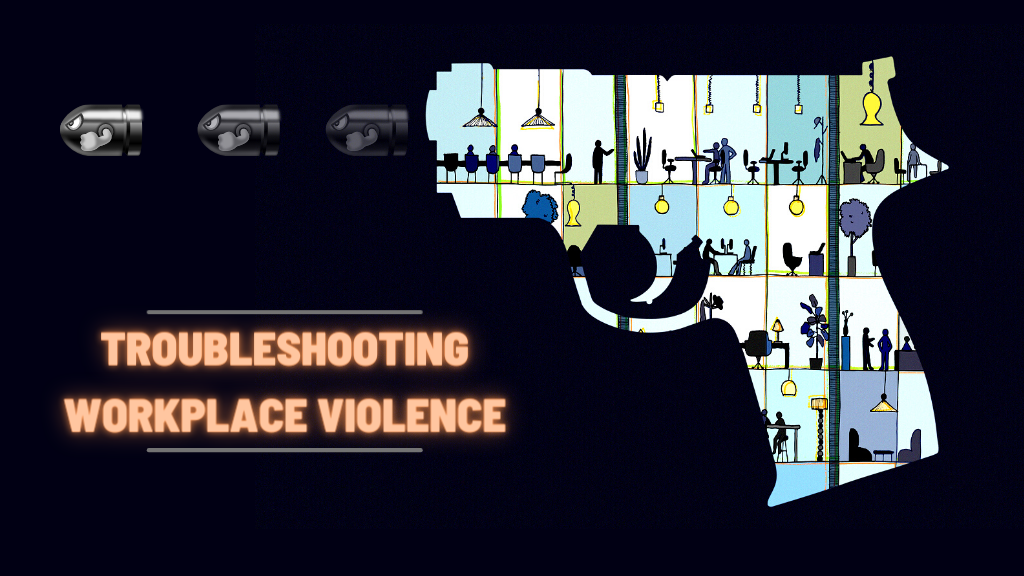Violence in the workplace is nothing new, but it is definitely not something to be proud of: While violence has literally taken a U-turn and has been on the rise for the past few years, it has affected so many employees and employers as well.
The thing is: a single case of violence is not only limited to the victim, but it has far-reaching consequences for the victim, as well as for the victim’s manager, co-workers, and employer. It is a burning issue that needs to be taken care of without avoiding it. Or else you know the outcome. It will let you sink your company with your own hands.
But, more often, this topic always stays in chaos with misconceptions and myths. I am sure you would not believe me, but this is why many victims can not open up and opt out of reporting the violence.
To reduce the possibility of workplace violence, companies must identify risk factors in their workplace and the way their workers operate, take necessary steps to limit those risks,& should build an extraordinary team culture.
And we are not just talking about dangerous instances like shooting. There are so many faces of violence that spread anxiety and toxicity. It is more important than ever to get aware of the warning signs, latest facts and statistics, and prevention measures for workplace violence. From harassment to intimidation, this blog will get you in the loop, so dive right in.
What Is Workplace Violence Called?
Any act or threat of physical violence, harassment, verbal abuse, intimidation, or other threatening disruptive conduct that occurs on the job against the workers is considered workplace violence. Employees, clients, consumers, and visitors may all be affected.
The number of occupational injuries and deaths caused by workplace violence is on the rise, which means that organizations must treat this issue the same way they would any other health and safety concern.
Well! To be very accurate, we cannot stop the violence entirely, but we can not step back and sit without doing anything. In short, reduce the likelihood of workplace violence by making a few simple changes.
As you already know, it is not an easy task to know when a person can transform themselves into a violent being. It is a need of an hour to stay aware of all the warning signs that may lead to violence.
Recognize the Warning Signs of Workplace Violence
Like I already said before, no one can ever remove the potential of an event entirely. It is possible to prevent workplace violence by being aware of the warning signals of a potentially hostile employee. To prevent violent situations, we must train our workers to keep their eyes and ears open at all times in order to prevent them from occurring.
Look out for these six warning signs while doing your day-to-day duties.
Being unreasonable –
Watch out for employees or individuals that constantly get triggered by whatever is going around them. The chances of a rational individual overreacting to comments and criticism are slim. They are more prone to take criticism personally than to attempt to improve and better their own performance.
Don’t get along with others-
Give special attention to employees that are able to get along with others, and you will have the upper hand. This group of employees is at a high risk of becoming aggressive and engaging in worker-on-worker violence.
Weapons may even be in their possession on a number of occasions. Especially when terminating these individuals, management should use caution.
Paranoid Behaviors-
It’s a red flag when you come across employees who believe their co-workers, company, and other individuals are out to get them. They make statements about being persecuted or being a victim of unfairness.
It can serve as an indication that they are likely to lash out when faced with disciplinary action or termination.
Angry, argumentative, and lacks impulse control –
Employees that are frequently combative, have a dispute with others, especially authority figures, and are always involved in conflicts require special attention.
Such employees can show the violent side by slamming or tossing objects, shouting and threatening, and being physically active. They display poor impulse control. Managers should be cautious about dismissing or punishing workers who are easily enraged, even if it seems clear.
Always plays the victim card-
A tremendous risk of workplace violence exists for employees who are unwilling to accept responsibility for their behavior. Such employees are excellent at blaming others, putting others in a state of uncertainty, and accusing others of being demoted or reprimanded. Their behavior can spiral out of control if they are not handled properly.
Antisocial behaviors –
Have you ever come across individuals that find violent behavior fascinating and fun to deal with: In fact, they admire violent crimes presented in the media, such as racial disputes, interpersonal violence, and many more.
It is evident enough that they may have a problem with the law. Their fixation with the killing potential of guns and their effect on people can be a sign of their mental illness.
How to prevent workplace violence
Without moving any further, look at these stats to know why it is essential to take preventive measures for your employees.
- Every year, over 2 million people are victims of workplace violence.
- In 75 percent of workplace violence instances, assaults are the most common type of incident.
- A whopping 7 percent of deadly attacks comprised kicking, slapping, and kicking.
- Thirty percent of respondents claimed they were ignorant of their company’s safety program.
- Service-related businesses account for more than 28% of all workplace sexual harassment.
- After a workplace violence incidence, productivity might drop by as much as 50%.
Just looking at these numbers should be enough to make you realize just how important this issue is. In no way, shape, or form, Workplace violence can turn into another aspect of work.
Whether it’s two employees bickering in the workplace or a full-fledged violent altercation, you must take action to prevent these situations from escalating.
It is you and your fellow employees that can deal with such scenarios. Your reaction to a workplace conflict might have an impact on productivity and morale. It will rather get a positive result, or it will only lead you to more conflicts.
So, what should you do if you find yourself in a combat situation? Who needs to be involved in order to prevent workplace violence?
Well! Below are 06 full-proven strategies that can minimize violence in the workplace.
Assess your work environment.
Examine all aspects of your workplace with a bit of skepticism. It is a need of an hour to figure out where the majority of your workplace violence prevention training should focus. One way you can dodge the problems is by asking yourself few questions such as:
Has there ever been any violence in your workplace? When employees leave late at night, how are they protected? Are there any easy ways to get out? Do you have a system in place to call for help? What are you doing right if there have not been any violent events in your company’s history?
These questions can be a big deal and prove to be a big help. Sometimes a simple look at current organizational practices can help to identify possible workplace violence risk factors.
Monitor Employee Activities
I am sure you might be thinking about how monitoring them will prevent violence in the workplace.
What if I say monitoring can help you acquire insights into the behavioral and temperamental changes of the employees. Isn’t that incredible?
Well! EmpMonitor is one such tool that can help you monitor your employee’s behavior and performance through their working hours. With the help of EmpMonitor, you can observe what your employees are up to during office hours, what websites and productivity levels they are achieving, and spot any suspicious activity or any unwanted behavior.
EmpMonitor is one of the most effective employee monitoring solutions available. It is the all-in-one employee management solution you’ve been looking for and didn’t know existed.
Adopt a formal workplace violence prevention training
Training can prove to be a huge asset. It helps employees comprehend the entire process and gives them the information and skills they need to carry out their obligations under the program.
When it comes to workplace violence training, the focus is frequently on the ways to manage a violent situation. But it is just as vital to teaching employees how to communicate effectively and empathically. It has the ability to prevent violence before it even begins.
Creating a Workplace Violence Policy
An essential part of your approach to avoid workplace violence should be a written policy in place. A policy that expresses your stance on fighting and other violent behavior in simple but clear terms.
For fighting and workplace violence, you may either write a distinct policy or leverage many existing rules you may already have. It is possible that you have a harassment policy as well. Make sure that your harassment policy includes and prohibits fighting.
Create a speak-up culture and supportive environment
The most underrated way to prevent violence is by creating a supportive environment. Believe it or not, your employees can feel safe if they know you are there for them and would not let any bad thing happen to them.
You and your HR department must make sure your employees are not alone and make them feel heard and supported at work. This way, you can ensure zero violent activities go unnoticed.
Plan out a circular that lets employees report threats, other violence, or if there is imminent danger. It can help people comprehend, detect, and report early indicators of possible violence, rather than quietly brushing them under the rug for the sake of going back to work.
Encourage your employees to accept individual differences.
Every workplace has personality conflicts or leadership clashes. These concerns, if left unaddressed, might lead to work discontent, despair, and even violence. It may occur in the form of verbal abuse, sabotage, or worse. And as you already know, the damage might be severe.
Organize a few fun activities and exercises that let the team know about each other. Let your team know about their team’s strengths and weaknesses. The idea is to make the team aware of their differences and how they can contribute to the team’s overall strength.
Also Read:
Make Your Workplace A Safe Place
The rising trend in workplace violence needs to get more attention than anything. Moreover, to lessen the danger of employees, property damage, or decline in productivity, employers need to take an active role in workplace violence prevention.
A good place to start is by getting familiar with the issue, and the next step is to do something about it. Furthermore, the time you choose to speak about it is the time close to perfect.
Be safe out there!

















